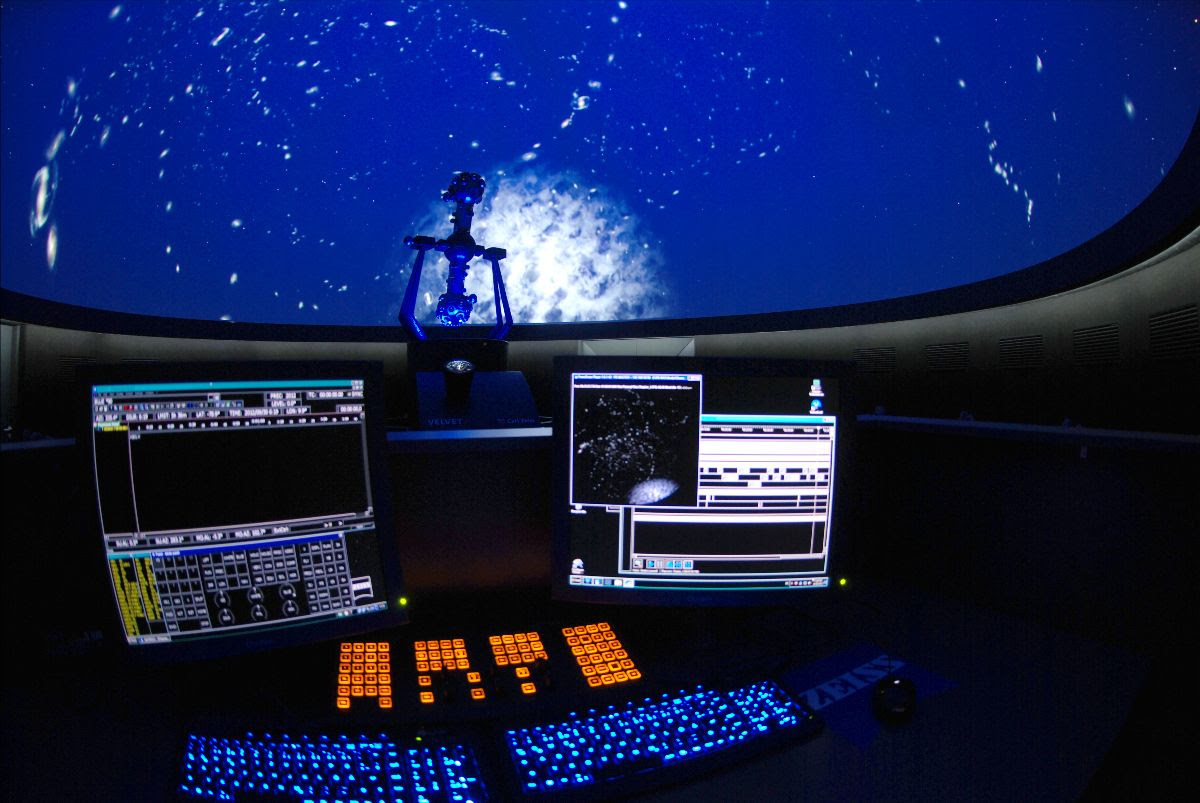The Laupheim Planetarium and Observatory, located just outside the German city of Ulm, presents the wonders of space to 30,000 visitors annually via the Zeiss planetarium with its immersive full-dome projection system that’s now been enhanced with a new sound reinforcement system that’s based around an Allen & Heath AHM-64 audio matrix processor.
The new system utilizing nine loudspeakers and two subwoofers in a 7.2 configuration with an additional two loudspeakers installed at the apex of the dome. In addition, the system needed to offer a tactile interface suitable for use in the dark by the in-house engineers plus the ability to control the planetarium lighting via the same physical controller.
Overseeing the audio mixer upgrade and integration was Dr. Max Rößner, a free-lance planetarium and immersive media engineer familiar with the specific demands of the application. “The planetarium world is an exciting field, but it is also a niche field, particularly when it comes to technology,” he says. “Therefore, it is essential that engineers can make use of interfaces that are open and well-documented, and to implement solutions that truly address the customers’ needs. The Allen & Heath AHM series and its ecosystem proved ideal for this.”
The AHM-64 matrix processor is fitted with a Dante card. Its rear-panel analog outputs are used to feed the nine loudspeakers and two subs in the planetarium while a DT168 Dante expander is used to provide localized analog inputs to the system including wireless microphone receivers, media players, and other auxiliary sound sources.
The building’s main sound source is a PC fitted with a Marian Clara E Dante interface and running Reaper, which is synchronized to the projection system via SMPTE and sends audio over the Dante network to the AHM-64 for routing and control.
For control, a pair of IP8 remote controllers were deployed, each offering eight motorized faders, eight OLED screens, and 23 assignable SoftKeys for a configurable yet tactile mixing experience suitable for use in the planetarium’s pitch-dark environment. The controllers are configured so that 10 of the faders are used to handle audio with the remaining six dedicated to lighting control.
“The IP8s integrated seamlessly during programming and commissioning,” states Rößner. “The AHM’s underlying architecture is flexible enough to enable the integration of unconventional functionality, such as lighting control in our case.”
For lighting control from the IP8s, Rößner put the AHM’s TCP/IP control protocol to use. He configured the system so that six channels on the AHM, with level controls assigned to six IP8 faders, transmit MIDI NRPN data over ethernet to the lighting computer where it is translated to DMX. When the lighting is controlled by the show automation system, the IP8’s motorized faders follow, ensuring the operator can always reclaim control if needed.
“The AHM-64 offers features usually only found in open-architecture installed audio systems,” Rößner notes. “As an engineer, I feel perfectly comfortable in both the closed and open architecture worlds, but I appreciated how easy it was to implement and deploy advanced functionality in the AHM-64, especially as this was my first time using the system.”
“The system was installed very quickly, and it has improved the sound quality significantly,” concludes in-house engineer Alex Gölkel. “It is a great improvement now that all sources can be mixed and used simultaneously with a user-friendly control interface.”




















